Sriram Devarakonda, MSEE is CTO of Cardamon Health.

Tell me about yourself and the company.
I’m CTO and one of the founders of Cardamom Health. I’ve been in the healthcare IT ecosystem all my life. I was at Epic many years ago, then went to work for Microsoft in their Health Solutions venture. After that, at Nordic, and then then most recently and currently at Cardamom. I have a product, platform, and services end-to-end view of the world.
Cardamom Health is a data analytics and apps company. Our goal is to create this end-to-end focus as a company. A lot of organizations are great in certain verticals, but what it takes to drive change in healthcare is to use data, uncover insights, and use the insights to drive application and workflow optimizations. We as a company are doing that end to end. We are a two and a half year old company and are making some amazing progress in this area.
How will health system technology change as the move to the cloud continues?
We can learn a ton from established verticals like finance, retail, and manufacturing. As a consumer, when I’m spending money online, the scale of cloud computing allows sub-second fraud detection when my credit card is misused, content personalization, and cybersecurity analysis. All these things are happening because of the scale of cloud computing. Healthcare can learn from some of those established verticals.
My prediction is that since we’re starting an early journey of a full-on cloud migration, we will eventually be able to see greater resilience in terms of things like disaster recovery and the kind of cybersecurity we can expect with a hyperscaler that has thousands of cyber engineers who are working on a cyber threat analysis.
Those are two specific examples, but also this model of hybrid cloud makes it easier to connect to each other. You’re on one hyperscaler, you want to move data to another hyperscaler, and the speed at which interoperability can happen. These are things that I expect in healthcare. My hope is also the amount of innovation, the speed of innovation, that will happen to launch a basic VM, test something, deploy, fail fast, and move forward. Innovation will be much faster.
There’s also a cultural aspect. Workforce needs will change. Some of the traditional reliance on on-prem — database management, network administration, and ETL management — some of it just goes away. Hopefully it is replaced with the need for somebody that is a lot broader in terms of cloud architecture, pure business analysts that can connect the different systems. Healthcare organizations will need to proactively manage that re-skilling and up-skilling in that hybrid cloud model.
How will health systems obtain AI expertise? Will they hire people, hire companies, or buy solutions?
We are working with many organizations, large and small. One thing that’s very clear is that everybody is in this mode of “necessity is the mother of invention.” Organizations are experiencing challenges with clinical burnout, which is a cliché term, but it’s truly happening at a scale that we have not seen before. Big, small, and in-the-middle organizations are looking at all options that are on the table to address workflow inefficiencies. I strongly believe that while everybody is going to buy — they already are buying from Epic or copilots from Microsoft – they are actively seeking out ways that they can take on very specific problems in those of areas.
For partnering with someone like us, we understand Epic. We understand technology. We have our own data scientists. We can take some of those smaller or mid-level problems that nobody is looking at and go after them with some force.
My perspective is that everybody is going to do it. The real question is how much of that will last and how far they will go with that with the development.
We also see the rise of low-code and no-core orchestration tools. There are amazing deployment frameworks out there and this democratization of AI. I’m looking at schools here in Loudoun County, where I’m from. Kids are coming out of college and high school with amazing skills in data science. It’s a lot more democratized than it was. Organizations will be comfortable doing more self-service AI and building their own AI tools, but they will absolutely buy as well. I’s a combination of build and buy, depending on how much build they can afford or how much buy they can afford.
Will we see some disappointment with health system attempts to apply AI to business problems that don’t create ROI? Are switching costs high enough that they will keep working on these projects, or will they just walk away and try something different?
It’s definitely a real challenge on how to measure the efficacies of AI agents, predictive models, and whatnot. People are still getting their heads around that. But there is low-hanging fruit. I have Microsoft, Epic, or Cerner. For me to adopt and take on their 50-plus models of the release out of box, and even go after those 50% of them that are around denials prediction, deterioration index, or the ability to respond to patient letters, these are straightforward use cases. If I can take off X minutes off every clinician, that’s value for them.
They are making some progress in some areas, not so much progress in the other areas, partly because of the efficacy of those models. Creating a framework for those, how to measure ROI and VOI, continues to be an interesting challenge. Somebody like us knows how to measure those workflows and improvements because we’ve helped other organizations do it.
How do newer technologies such as AI agents and model deployment via Nvidia Inference Microservices fit into the healthcare environment?
There are two parts to the question. First, agents or agentic workflows are already being deployed by all platforms alike. Some of these are what I call headless agents, where they’re doing some of that background agentic work, and some of that is UI app focused. They do very specific things, very singular. Some are multifunctional.
For us, the greatest inefficiencies lie in healthcare where you are collating information from X different areas — whether it is data from ERP and EMR — and then making sense out of it. Then depending on the kind of agent, whether it’s an information retrieval agent or an active agent that is making actions happen, is where the biggest needs are.
Every health tech vendor has agentic workflows at the core. The real questions over the next few years are some of the same challenges that we have seen in analytics historically — API access, data governance, what agents should have what access to information, and the lifecycle of creating an agent. That will become a process strategy question for organizations, because you don’t want agents to go do those things without other governance.
These are the challenges, but over the next couple of years, there will be this proliferation of agents across the board, just like when everybody wanted to do analytics and reporting. We have this bloat problem in the industry where the organizations have so much to do. How do you keep sense of what makes sense? Agents are here to stay. It really depends on the kinds of agents – tech-focused, back end, front end, and whether they act or retrieve all of that. But the value will be from their governance and change processes.
Will software vendors go beyond using AI to generate code and use it to change the functionality, appearance, or deployment of their products?
There will continue to be agents continue that are deeply ingrained into workflows such as Epic’s. You are a physician and you have an agent that does a very specific activity. Generating a progress note is one of them. At the launch of a quick voice command, some of that will happen. Those are deeply integrated solutions. But I also see external agents that harness and collate data from multiple sources.
It ultimately depends on which agents are natively part of your core workflows. If I’m a third-party vendor in value-based care or clinical research, I may need to do things to integrate with Epic and integrate that back into workflows. Ambient AI is great example.
Will companies try to add EHR AI functionality and hope that the EHR vendor doesn’t create their own version?
Take analytics as an example. A lot of amazing analytics work comes out of Epic, and lots of amazing organizations are using Epic’s own tools. But you still have these other organizations that have non-Epic analytics models. Is it the form factor of the external analytics tool? Is it the way that it’s integrated into Epic? Is it the flexibility of the UI?
If I were to build an AI tool to integrate with Epic, what parts of it can I do with my AI tool that maybe Epic cannot do, ever or in the short term? Short term in healthcare as 18 to 24 months. because the amount of innovation that’s coming is constantly changing. How do I manage that?
It’s a balancing act, honestly. I’ve seen organizations that have been in analytics for a long time still sustain because they constantly add some of the additional value. Ambient AI is a perfect, timely example today. Those ambient AI documentation companies do a great job when they have this bi-directional capability within Epic. I am a physician, I launch a note, I record a conversation using ambient AI on my mobile. As long as I deeply integrate within Epic workflows and to the exact same clinical note section, I have no dual documentation needs and no burden or extra steps needed.
But if I can’t do that, how good is AI? It will really depend on the bi-directional capabilities that I have the ability to do within Epic or Cerner or whatnot. But also the other things that I can bring to bear. If I’m a value-based care company, in addition to the ambient AI, I also have this external claims database, which is awesome, that I can uncover some of those notes. It really becomes the question of, why will a physician, clinician, or nurse come out of their core EMR, and is that big enough for them to come out of the EMR?
In the early days of ChatGPT, companies rushed out wrapper-type products that were quickly matched by competitors or OpenAI’s own enhancements. How do companies decide whether to quickly release a product that doesn’t have a strong competitive moat versus hunkering down for long-term success?
I’ll give a slightly non-technical answer. I’ve been in healthcare for the last 20 years or so. With analytics, data platforms, and point solutions, why did some survive and others disappeared? Some lost their technical edge. They’re not innovative any more.
But overwhelmingly, I feel that some of them didn’t really solve the problem. They had technology, but did they enable the technology to the last mile? Do I have the combination of strategy culture as a company to continue to innovate and present that to organizations or to my users?
What I would tell those organizations is that technology is absolutely critical, but if you do not have the ability to figure out adoption, the enablement of all that, and constantly innovate in terms of other features you can build that maybe some of these other larger companies cannot be prepared, you are always at risk of being displaced. It is always the last-mile integration and constantly improving that for organizations.
What is an aspect of healthcare technology for which you have a contrarian opinion?
We are now close to 25 or 30 years of EMR deployments and digitization of records. Interoperability is still the same challenge. It’s not getting better, and all our progress has been incremental. We’ve gone from HL7 and came up with FHIR, which is a modern implementation of HL7 in its own way, more REST API based. But it’s all been incremental, and we have not really solved the foundational problem of interoperability.
I talk to any organization that’s in clinical research, value-based care, or even emerging fields like AI. Talk to any tech venture company. They still are clueless to figure out how best to integrate with not just EMRs, but with each other, with other vendors. The amount of work that has happened and we’re at a point where this incremental thinking of replacing one format to another is just not working to me. It’s destructive thinking. There has been a lot of talk about establishing national EMPI to reduce that data fragmentation.
Also, really, what is really interoperability this day compared to what was 25 years ago? There’s a lot more data sets that are interoperable, lot more fragmentation of workflows, and we’ve not really expanded the definition of clinical documentation to encompass everything that happens with a physician or a patient. Fundamentally disrupting that interoperability mindset is what I would say.
Will AI create a technical arms race where smaller companies can’t keep up, or will it instead give them a new way to compete?
It’s how technology has always been disrupted. Think of what Abridge has done in the last two years. Think of what ChatGPT has done. There’s still a small company.
Disruption will always happen, and my strong belief is that the next area of disruption will come from data creation, not data input. If you look at what we’ve historically done for the last 40 years, data input has always been text-based, whether you’re writing on a piece of paper or typing on a keyboard. But now we are in this early phase of disruption by data creation. The emergence of data input should not be by explicit text input, but by the product of human action, whether it is video documentation, wearables, or devices.
Innovation will come from smaller companies that are solving those problems around wearables, devices, and video documentation. Continued expansion of ambient AI is where that innovation will come. Small players can still disrupt, is my hope.
The amount of innovation that is coming out of EMRs and ERP systems is amazing, but some of this AI noise is also putting them on a back seat. We have to be careful about adulation of AI because AI is still new. It’s going fast, maybe much faster than anything we’ve ever seen, but it could also come at the cost of some of the innovation that’s already within the investments that you’ve made. Maximizing the usage of what you have is never the wrong strategy.
Comments Off on HIStalk Interviews Sriram Devarakonda, CTO, Cardamom Health












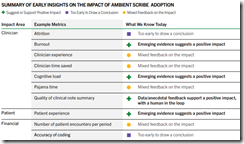








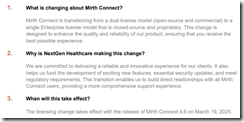
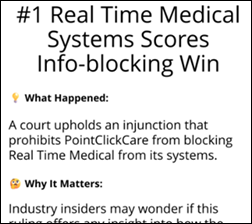








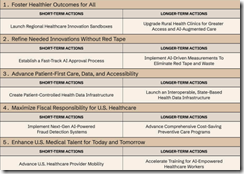












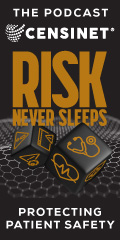














































































Nice article, but every time I saw the word "provider" (24 times), I felt demeaned. We are not "providers". How…